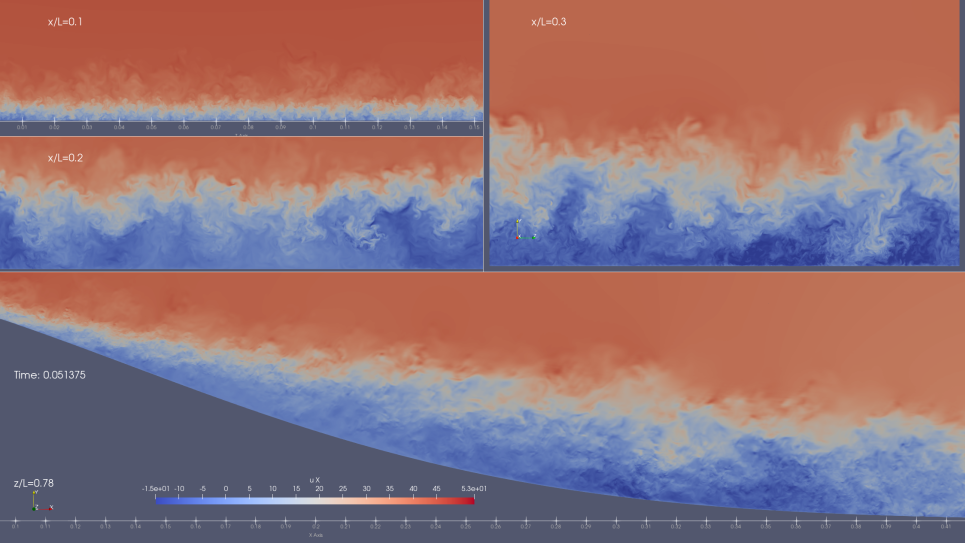
Direct numerical simulation of separated flow over a bump provides valuable training data on the effects of pressure gradients and wall curvature. Three stream wise slices at x/L={0.1, 0.2, 0.3} and one span wise slice show development of the separation and reattachment regions of the flow. Image: Kenneth E. Jansen, University of Colorado Boulder